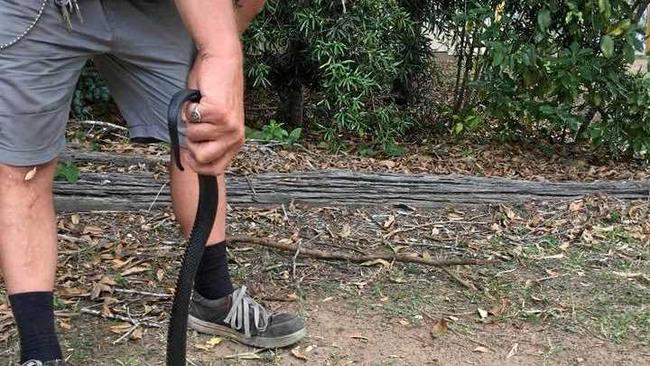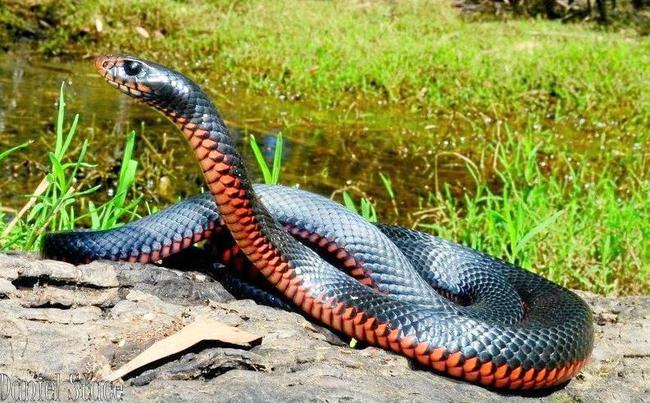Gympie's deadliest snakes are turning up everywhere
Snake catcher on Gympie call outs: 9 times out of 10 it's not a python

Gympie
Don't miss out on the headlines from Gympie. Followed categories will be added to My News.
NEVERMIND the '80s, Gympie could soon be known as venomous snake country with call-outs on the rise for black and brown snakes that are venturing beyond our comfort levels.
The most recent incident was on Wednesday when a red-bellied black snake appeared underneath a building at Wolvi State School during play time.
Snake catcher Bill Pledger, of William Pledger's Wildlife Management Service, was called to remove the 1.5m snake that had made its way to a log near a classroom, but not before scaring a teacher who was resting near it.
Mr Pledger, who services Gympie and the Sunshine Coast said while shy by nature, red bellied-blacks, like all snakes, were being forced to move around more due to dry conditions.
If one is sent into sudden defence mode and strikes, the venom can cause organ failure, he said. But the harm caused would depend on the size of the victim.
The snake at Wolvi hid in the log, where it was attracted to the smell of some squatting cane toads (while strictly not on their diet), taking the catcher close to capture it by splitting the log at one end.
He said the removal was interesting and a type that is becoming more common in the Gympie region.
"I get excited when I get a call to Gympie now because nine out of 10 times it's not a python.”
GYMPIE'S TOP 5 SNAKE STORIES THIS YEAR:
Mar 8: EEEK! Unwanted Gympie visitor in the dead of night
Mar 6:Boy bitten by sanke in Gympie region
Mar 2:'I watched my husband fight this python bare fisted'
Feb 17:'Desperate' snakes more underfoot & in your face
Feb 6:Not so little snake having a snooze at Centro
Call-outs to snakes in the Gympie region are four times what Mr Pledger would normally expect at this time of year, with most being the venomous type.
The hot, dry weather causing their natural food and water sources to disappear is the primary factor sending snakes into inhabited areas to replenish.
He said the snakes don't see "a school as a school - they just pick up on a food source and follow it”.
But he also said water lying around in dogs bowls was a major attraction for the reptiles, who needed to drink like any other animal.
"In the hot like this it's the water that's the primary attraction and it's the food that becomes the secondary.”

Mr Pledger said given the state of the weather he did not expect snake activity to slow down coming into April, a time they would normally brumate.
Instead he urges people in this unusual season to make it as easy to see snakes as possible in their homes.
He said when people react loudly to seeing a snake rather than calmly, snakes are likely to feel more threatened or surprised themselves, and may strike.
If people ensure snakes are easy to spot around their homes instead of hiding in surprise spots it reduces alarmed reactions from both parties, he said.
He said education was the key to sharing the habitat.


